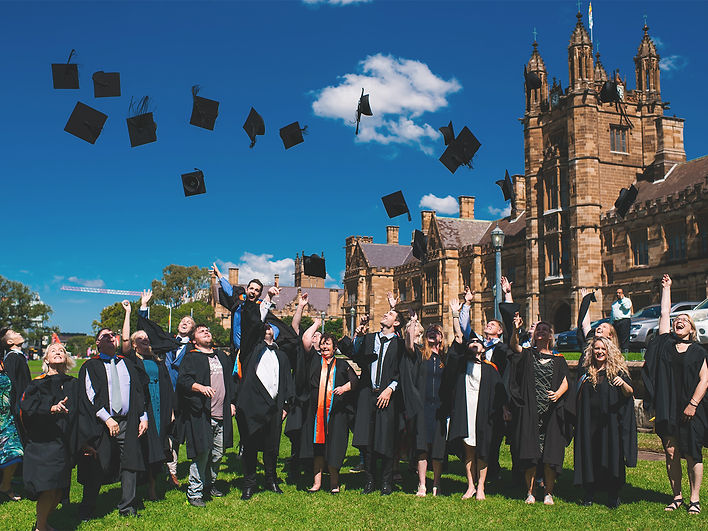


School information
Secondary school
Secondary and primary education in Australia lasts for 12 years. Primary education lasts for 6 or 7 years, depending on the state or territory. Most public and private secondary schools in Australia accept overseas students for admission. Secondary school education in Australia has prepared students for university, public technical colleges or other higher education institutions. After completing Year 10, students will be awarded a Certificate of Secondary Education by the Education Department of the province. Students will also be able to continue attending the 11th, 12th grade or optional Vocational Education and Training (VET) courses according to their needs and abilities. State governments will issue high school diplomas to students after they complete the 12th grade of secondary school, and universities will also enroll eligible students based on the students' high school test scores. The school year in Australia starts from January 1 to February 11 and December of the same year, but some schools also accept student applications during the school year.
Vocational education and training
Vocational Education and Training (VET) is available from the Technical and Further Education (TAFE), Registered Training Organizations (Australia) and many secondary schools in Australia. The VET program focuses on practical and professional vocational training ranging from apprenticeship courses, diplomas and to degree courses. The courses cover a wide range of topics. In addition, most VET programs in Australia have a credit transfer system with individual universities, and graduates can join the degree programs offered by the university. Generally, VET courses start in February and July, but some subjects will start in October.
University Foundation Course
The foundation course of the University is a course designed for overseas students to prepare for pre-university preparatory courses. The course content is designed for university subjects so that students have basic concepts for future studies in the university. English is a compulsory subject designed to enhance students' English proficiency. The basic classes are more flexible in terms of admission time. In addition to February, June and October, many schools provide more than one school day to match the time when overseas students complete their secondary education in their own country. Students do not need to take the public examination in the foundation university classes. School homework, attendance and test examinations are used to assess student performance. When students pass all the relevant requirements they can apply to their preferred university.
University
Australia has 37 public universities and 2 private universities, as well as 2 overseas universities with branch offices in Australia offering a number of bachelor's and graduate degree programs. Students usually take three or four years to pursue a bachelor's degree, one to two years to pursue a master's degree (teaching or research), and three years or more to pursue a doctoral degree. The academic year of a university course usually starts from the end of February or early March and some courses begin in July. Australia's universities are more integrated with the American style of open school ethos and continue the British traditional elite cultivation, becoming the world's most important education hub, each attracting a large number of students from all over the world to further their studies.
Australia is a Commonwealth country. Therefore, it has inherited the British university education system. The bachelor's degree is generally only three years (except for specialists such as doctors and lawyers), and the master's program can generally be completed within one and a half to two years. Much like Britain, it saves time compared to many other countries (four years), so both Australia and the United Kingdom are the first choice for international students.
Tuition fee (one year)
High school (every year)
AUD 10,000 - 30,000
Certificate and Diploma (per year)
AUD 8,000 - 25,000
University Foundation Courses (per semester)
AUD 15,000 - 30,000
University degree (per semester)
AUD 14,000 - 35,000
Master's Degree Program (per semester)
AUD 15,000 - 36,000
Living expenses (per year)
AUD 18,000 - 24,000

The weather and the time difference
Australia is located in the southern hemisphere, the seasonal climae is exactly the opposite of Hong Kong. Spring is in September-November, summer in December-February, autumn in March-May, while in winter in June-August. The whole of Australia can be divided into two climatic zones, the north is tropical,
Cities in the south are temperate, with average temperatures in the north about 25-33 degrees Celsius and temperatures in the south and Sydney about 13-21 degrees Celsius and Melbourne about 10-20 degrees Celsius. Although the winter is cold, there is not much snow. Usually it will be hot during the summer months, with occasional heat waves with temperature sometimes exceeding 40 degrees Celsius.
Time Difference
Hong Kong students studying abroad need to face the problem of time difference. However, there is a smaller time difference between Australia and Hong Kong. The maximum time difference is only three hours. Even in some areas, there is no time difference with Hong Kong which reduces the burden of jet lag.


.jpg)


Awarded "Hong Kong Most Popular Brand" by Asia Brand Development Association, Awarded "Heart to Heart Company" by the Hong Kong Federation of Youth Groups, Awarded "Hong Kong Most Valuable Company Award" by Mediazone Limited, Awarded by the Hong Kong Council of Social Service as a "Caring Company" and have won the recognition and affirmation of customers, partners and those in the industry.
L&K Group Holdings Limited all rights reserved prohibit copying or establishing without written authorization
(Disclaimer: Some articles comes from the Internet and are for reference only)
© 2019 by L&K Group Holdings Limited.

.jpg)